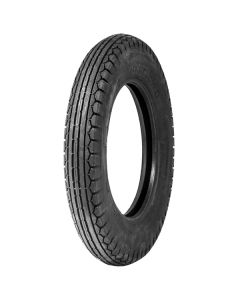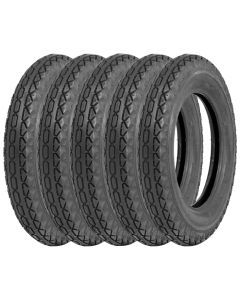Lagonda M45 Tyre

Lagonda M45R Rapide in 24 hour Le Mans 1935
Lagonda M45 1935
- The superb Meadows engine 4.5 Litre Lagonda fitted 19" wheels. We would recommend the 5.25/6.00 x 19 Michelin D.R.
- For sporting use the 6.00 x 19 5-Stud Dunlop Racing is by far the best, and is also road legal.
- The wheels on the M45 require innertubes to function. We would suggest that the Michelin 19/20 H RET is the best innertube for the Lagonda M45.
- However for racing a specially designed racing innertube would be better suited, the 600X19 Dunlop would perform best on the track fitted with the 600X19 Race Innertube.
Lagonda M45 History
The first 4.5-litre car, the M45, was unveiled during the 1933 Olympia Show. It was powered by a 4453cc Meadows engine that had been somewhat modified by Lagonda. In Lagonda form, the bores were offset to let them in. The chassis was essentially the same as the existing 10'9" 3-litre chassis, but with servo-brakes and a larger rear axle. The 3-litre gearbox proved insufficient fairly fast, and Meadows' own box quickly became common, with most early vehicles modified with it. The engine had dual ignition, with a coil on one side and a horizontal magneto on the other.
Lord de Clifford got the M45 off to a strong start with a well-publicised voyage to Greece in the prototype, outpacing the train to Brindisi by 14 hours. A trio of lightweight short chassis vehicles driven by Arthur Fox and fitted with Girling brakes performed admirably at the 1934 TT.
The M45 was an immediate success, with glowing road testing in every publication. The Meadows engine generated around 115 horsepower compared to the 3 Litre's 78 and was no heavier, probably even lighter, therefore the performance was astounding for the time, with the tourer approaching 100 mph. Mr Meadows soon found himself shipping batches of engines twice a week, even during the winter, when Lagondas business is generally quiet. The set pricing was quite affordable, with the tourer costing £795 and the saloon costing £895. In retrospect, they were arguably too cheap, given that a similar 3.5 litre Bentley cost £1100 for the chassis alone, after which the customer had to arrange and pay for a coachbuilder. It was a successful vehicle that served as the chassis for three team cars that participated in 1934, one of which won Le Mans in 1935!





















